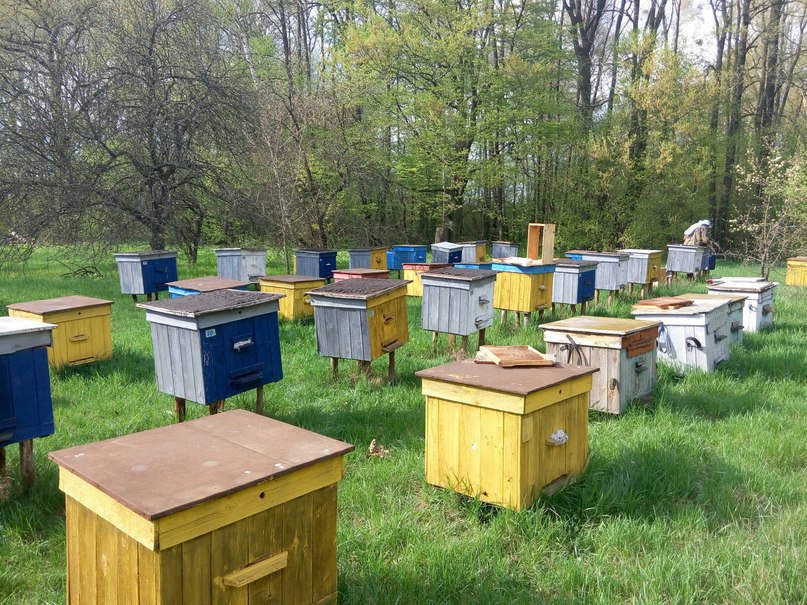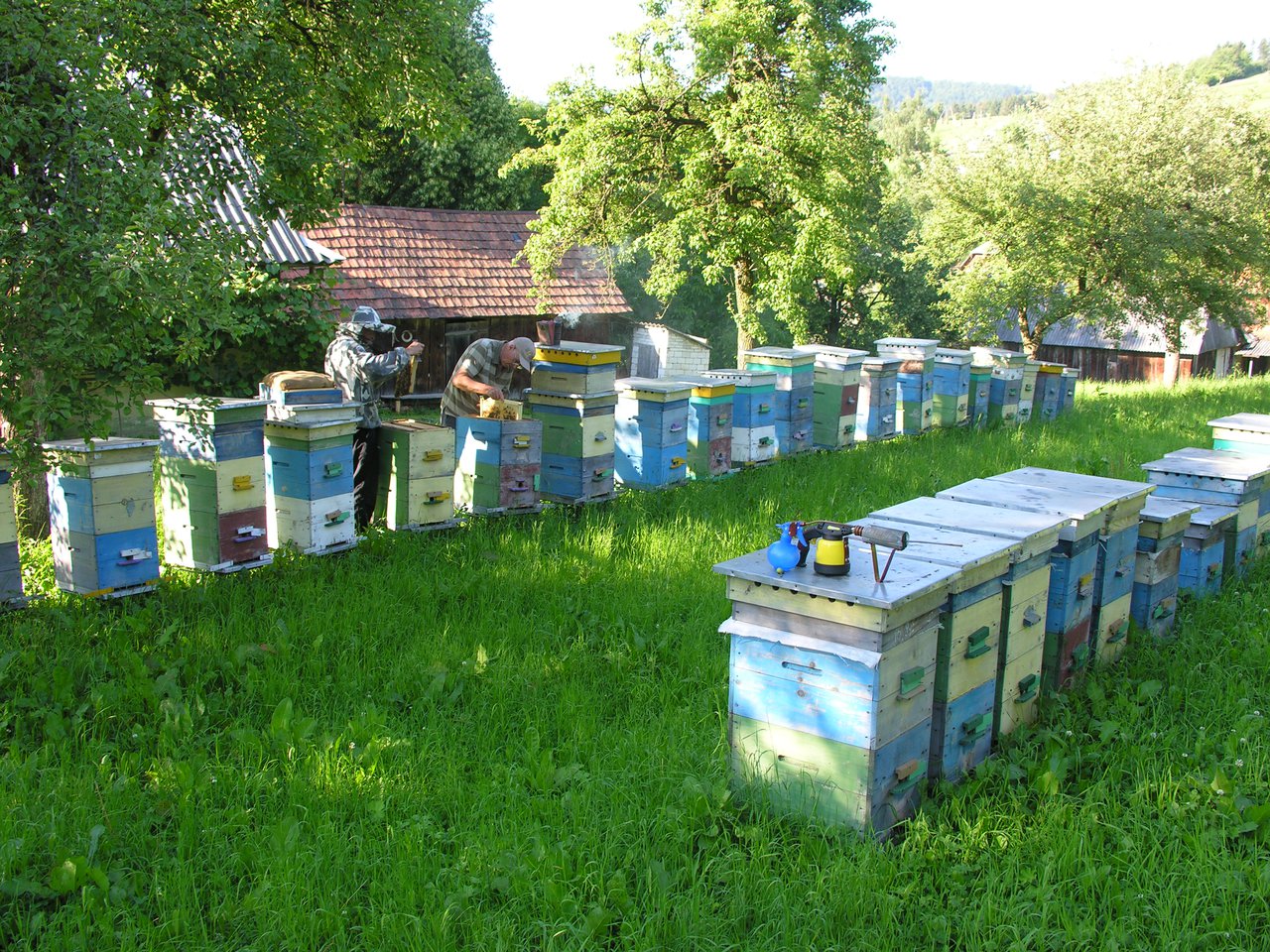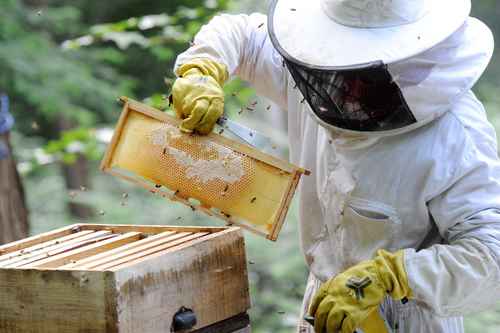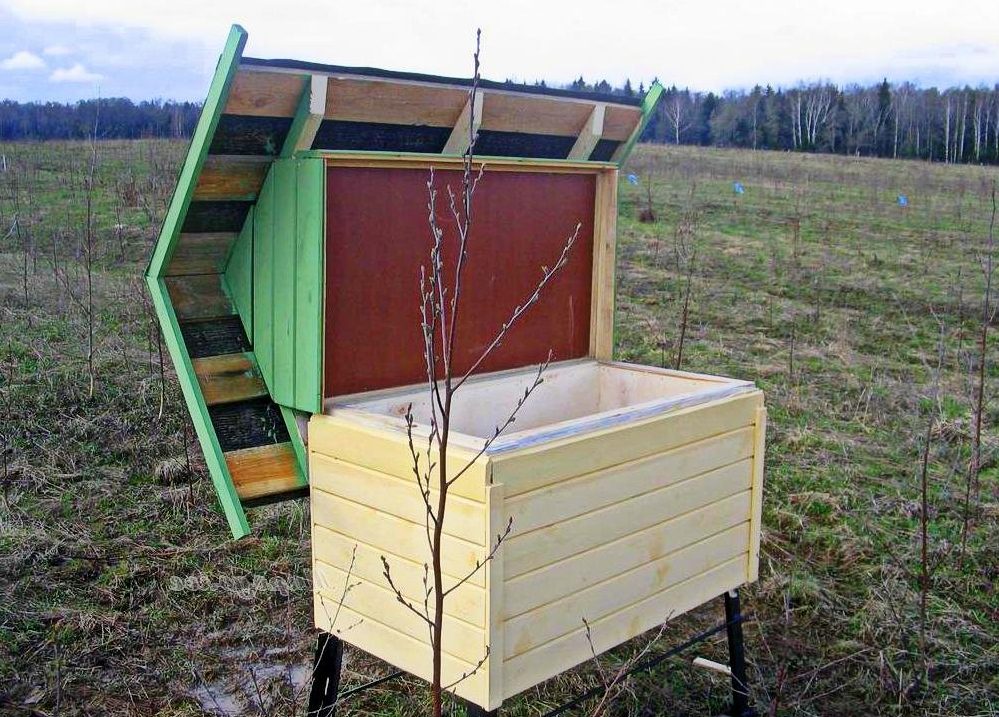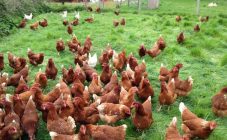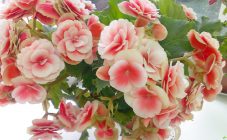Content:
In order to start an apiary, it is absolutely not necessary to know everything about bees and beekeeping. A beginner may well start with a minimum of knowledge, the volume of which will increase with experience. Unfortunately, many do not know where to start beekeeping without experience, and abandon the idea of breeding honey insects.
Where to start a beginner
Having decided to try beekeeping in practice, you will have to start from scratch - collect and assimilate basic information. You can learn beekeeping from scratch by getting to know the beekeeper's experience. If there is none in the environment, there will be nothing left but to turn to specialized literature. When studying beekeeping for beginners, it is not the number of books read that matters, but the quality and usefulness of the information they contain. It will be useful to get a general understanding of the life of bees and their characteristics. To accumulate the corresponding baggage of knowledge, you can study not only books, but also the Internet.
To work competently and productively with bees, you need to become familiar with the anatomy of the bee and its biological characteristics.
For a novice beekeeper looking for where to start, it will be especially useful to look at any of the online beekeepers' forums. There, not only experienced specialists share their extensive experience and secrets of beekeeping, but also beginners talk about their mistakes.
It is more expedient to start teaching beekeeping in the autumn or winter period, so that with the onset of spring it will be possible to start applying the knowledge gained in practice.
Beekeeping secrets
There are a number of simple recommendations that at first may be useful to anyone looking for an answer to the question of how to start beekeeping from scratch. Among the most significant tips are the following:
- All inventory and equipment should be bought exclusively in specialized stores. Most likely, you will have to do it in parts - all accessories for breeding bees are quite expensive.
- Work with bees should start in spring (when flowering begins).
- Bee colonies should only be purchased from reputable beekeepers or from special farms.
- When buying bees, special attention should be paid to the queen. The brood should be without gaps - this is one of the most significant indicators of insect productivity.
- From familiar beekeepers, you can take the necessary at first equipment from among those that are no longer used by experienced specialists.
- It is not allowed to use substances with pungent odors in the apiary.
- Insects must be prepared for the winter period.In this case, all the necessary measures should be taken in advance.
- In search of an answer to the question of how to get bees correctly, you should not start a large number of families right away - they take a lot of time. It is worth starting with three or four insect houses.
How to become a beekeeper
Breeding bees is a useful and exciting activity. Having started thinking about beekeeping for beginners, where to start, you should not postpone the theoretical and practical study of the process on the back burner.
Learning the basics from A to Z
Once colonies are acquired, the first thing to do is to place them in their permanent locations. A garden with trees is best suited for an apiary.
There are a number of other subtleties that must be taken into account:
- it is better to turn the entrance of the houses towards the south or east;
- the installation of hives should be carried out on special supports so that the distance from the surface of the earth to the house varies from 30 to 40 centimeters;
- the grass from the place of the apiary must be completely mowed, try to completely destroy the nests of ants;
- the bee drinker must be installed in advance;
- you should acquire large weights on which one of the hives should be installed (as a control); it will be hung up, and by the results it will be possible to judge the development of the family and the number of bribes;
- on the first day after placing insects in a new place, they should not be disturbed;
- to organize the proper care of the bees, it is worth keeping a special beekeeper's journal, in which the results of the examination of the bees are entered.
It is recommended to protect the apiary both from the sun and the winds. For this purpose, it will be useful to plant shrubs around the perimeter, for example, hawthorn or acacia. They will create a solid hedge.
The hives need to be painted in different colors. This will allow insects to accurately enter your home. A great way to arrange houses is a checkerboard pattern. Alternatively, they can be placed in a shed or attic. Using this closed hive placement method will provide additional protection for the family. In addition, the described approach will save the adjacent territory.
When theoretically studying information on such a topic as beekeeping for beginners, you should delve into the following topics:
- functional differences between insects and their interaction with each other;
- the specific behavior of bees at different times of the year;
- collecting nests and preparing for wintering;
- removal of the uterus;
- formation of layering;
- anti-combat methods;
- correct arrangement of hives;
- features of wax processing;
- major diseases of bees;
- harmful parasites.
For those who are just starting to comprehend the basics of how to become a beekeeper from scratch, it is important to be able to distinguish between drones and workers, as well as to isolate a queen. It is equally important to get the skills to distinguish the age of the brood.
Of the tools when working with bees, the following materials and tools will be required:
- framework;
- foundation;
- barriers for tap holes;
- padding polyester pillows;
- outpost boards for houses;
- boxes for carrying frames;
- leather or rubber gloves;
- honey extractor;
- brush;
- chisel;
- smoker;
- protective mask for the head;
- protective suit for the body.
All of the above is the basis that no modern beekeeper can do without.
How to get bees from scratch in the country
An ordinary summer cottage is suitable for organizing an apiary. In this case, the presence of bees in the country will be useful for the garden.But in order for everything to work out, you must follow certain simple rules and recommendations.
To begin with, you should start no more than six families. The hives should be placed at a distance of at least two meters from the neighbors' site.
Despite the fact that insects do not tolerate strong odors, it is quite permissible to install hives in the immediate vicinity of plantings of raspberries, cherries, mint or garlic. Insects are completely indifferent to the aromas of the listed plants.
Before you start actively looking for an answer to the question of how to properly get bees in the country, you should make sure that there is a sufficient number of honey plants near the site. First of all, we are talking about such plants as willow, maple, hazel, coltsfoot, white clover, meadow cornflower, sow thistle, etc.
In general, dacha beekeeping is a fairly profitable business. Indeed, in fact, the beekeeper not only receives honey, but also provides his fruit and berry plants and shrubs with the possibility of cross-pollination, due to which fruits appear. It is especially useful to place bee colonies in fairly young gardens.
The basics of modern beekeeping
New methods in beekeeping appear constantly and are also regularly improved. They can be conditionally divided into two main groups:
- anti-combat;
- using swarm energy.
Some experienced beekeepers use in practice the method proposed by Kovalev at one time, and are trying to modify it for the better.
Having set the goal of studying beekeeping from A to Z, it should be understood that the desired result when using the latest techniques is possible only if they are used, taking into account the peculiarities of honey collection in a particular region and its natural conditions.
The first step is to identify the melliferous lands that make up the main honey collection of the area. Then, applying the results of our own observations and studying information from reference books, one should determine the initial period, the end, and the duration of the flowering of these honey plants. Such a schedule will be useful to find the right time for the insects to prepare for honey harvest.
Beekeeping methods can be roughly divided into two main areas:
- keeping families in large hives;
- the formation of layering and different techniques.
The first technique is recommended for regions with a short build-up period, the second - with a long one.
In practice, you can quite successfully combine the two designated methods of beekeeping.
Optimization of the beekeeper's work
Beekeeping, where to start, is often of interest to not the youngest people who are looking for an interesting and new occupation for themselves. Since it is often difficult for older people to do some of the work in the apiary, it will be useful to talk about some interesting ways to make the work of the beekeeper easier.
These are the following points:
- If it is difficult to remove the cover from the hive, you can replace it with an opening structure. To do this, it is necessary to equip the lids with hinges, as well as restrictive braces.
- It is better not to carry especially heavy boxes with frames by hand, but to transport them on a trolley or wheelbarrow, additionally equipped with an easily removable frame.
- To simplify cleaning the bottom of the hives in the spring in the fall, during the assembly of the nest for the winter, it is worth laying a sheet of cellophane under the frames.The size of the leaf depends on the number of frames and the width of the hive. In this case, there must have been a margin of length. This will allow you to remove the cellophane by twisting it along with the undercarriage.
- Side plates can be used instead of folds. This makes it easier to separate the bodies from each other. As practice shows, bees usually heavily polish the cracks, and it is not possible to tear off the bodies from one another. Sideboards solve this problem with minimal effort and time.
- Parts for the hive should be made the same size so that they are interchangeable. This will allow them to be used in any of the hives in the apiary.
One of the most significant prerequisites for beekeeping is not only the desire of the future beekeeper to carry out his development in the appropriate direction, but also the availability of a suitable place, which is required to place an apiary. It should be borne in mind that the average flight radius of a bee is about two kilometers. In this area, honey plants should be present in sufficient quantity and there should be no factories, roads and other factors polluting the environment.
Despite the fact that beekeeping cannot be called a simple activity that can be learned in a couple of weeks, many are seriously addicted to this type of activity. If you approach the organization wisely and properly combine theory with practice, success will come sooner or later. The most important thing is not to hesitate, to go towards the set goal and not to quit when faced with the first minor difficulties.

